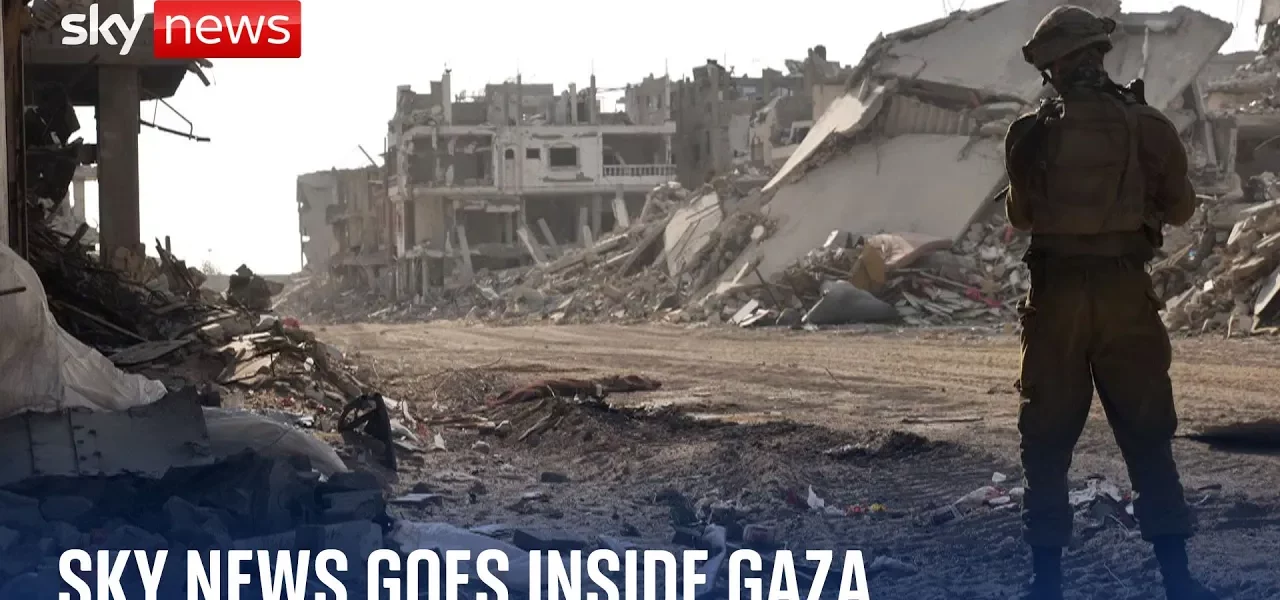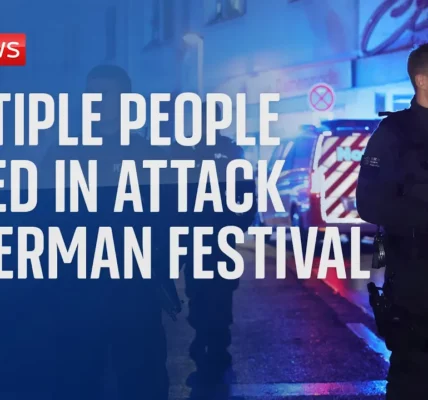Inside Rafa: The Devastation in Gaza

This article explores the dire situation in Rafa, Gaza, revealing the extensive destruction and ongoing military operations as reported by Sky News. With exclusive access to the region, we delve into the humanitarian crisis and the implications of the conflict.
Introduction
Sky News has provided a rare glimpse into the war-torn city of Rafa in the Gaza Strip, highlighting the catastrophic consequences of the ongoing conflict. As the war approaches its first anniversary, the devastation is palpable, with entire neighborhoods reduced to rubble. The situation is further complicated by the military operations conducted by the Israeli Defense Forces (IDF), aimed at neutralizing Hamas fighters who continue to pose a threat. This report presents a detailed account of the destruction witnessed, the challenges faced by journalists, and the broader implications of the conflict.
Access to Rafa: A Restricted View
Gaining entry into Gaza has been a significant hurdle for international journalists. The IDF controls access, and Sky News was granted a carefully monitored opportunity to report from Rafa. The following points outline the access conditions:
- Entry was facilitated through the Philadelphia Corridor, a route along Gaza’s border with Egypt.
- Journalists’ movements were closely monitored by the Israeli military.
- All gathered material required prior clearance from the IDF before broadcasting.
This restricted access raises questions about the narratives being presented to the world, as independent reporting remains nearly impossible under current conditions.
The Human Cost of Conflict
Before the outbreak of war, Rafa was home to approximately 250,000 residents. Today, the streets are nearly deserted, with remnants of life scattered among the ruins. The IDF claims to have dismantled Hamas’s military presence in the region, but pockets of resistance remain.
The Destruction of Neighborhoods
The aftermath of military operations has left neighborhoods in disarray, characterized by:
- Flattened buildings and demolished homes.
- Visible artillery damage, including holes blown in walls.
- Personal belongings left behind, symbolizing the abruptness of evacuation.
Some of the most heart-wrenching images include:
- A child’s tricycle, stark against the gray dust and rubble.
- Clothes hanging in wardrobes, untouched since their owners fled.
- Bullet holes marking the walls, a grim reminder of the violence.
Military Justifications and Consequences
Israeli military officials argue that their actions were necessary due to Hamas’s preparations for conflict, including the installation of booby traps and fortified positions. However, the extent of destruction raises ethical questions regarding military strategy and humanitarian impact.
The Underground Networks of Hamas
One of the significant findings during the military operations was the discovery of Hamas’s extensive tunnel networks. These tunnels served various strategic purposes, including:
- Facilitating movement and concealment of fighters.
- Transporting supplies and equipment across borders.
- Providing a means of escape during military engagements.
Notably, a shaft leading to a tunnel was uncovered beneath a child’s bedroom, illustrating the deeply entrenched nature of this conflict within civilian spaces. The IDF has reported uncovering multiple tunnels running into Egypt, indicating the complex logistics of Hamas operations.
The Future of Rafa and Gaza
As the conflict continues, the prospects for peace or reconstruction remain bleak. Israeli Prime Minister Benjamin Netanyahu has reiterated the IDF’s commitment to achieving military objectives, suggesting that the conflict could evolve into a prolonged counterinsurgency. The cabinet faces crucial decisions regarding the future of Gaza, with options that may include:
- Continuing military operations to fully eradicate remaining threats.
- Pursuing diplomatic avenues to establish a ceasefire.
- Implementing reconstruction efforts to assist displaced populations.
The possibility of a ceasefire seems increasingly uncertain. As the situation evolves, the humanitarian needs of the people of Rafa must not be overlooked.
Conclusion
The devastation in Rafa is a powerful testament to the human cost of war. With entire communities shattered and ongoing military operations, the path to recovery appears daunting. As international attention turns toward Gaza, it is essential to advocate for humanitarian support and a lasting resolution to the conflict. To stay updated on this evolving situation and related articles, please explore our other content on the Gaza conflict.
“`




